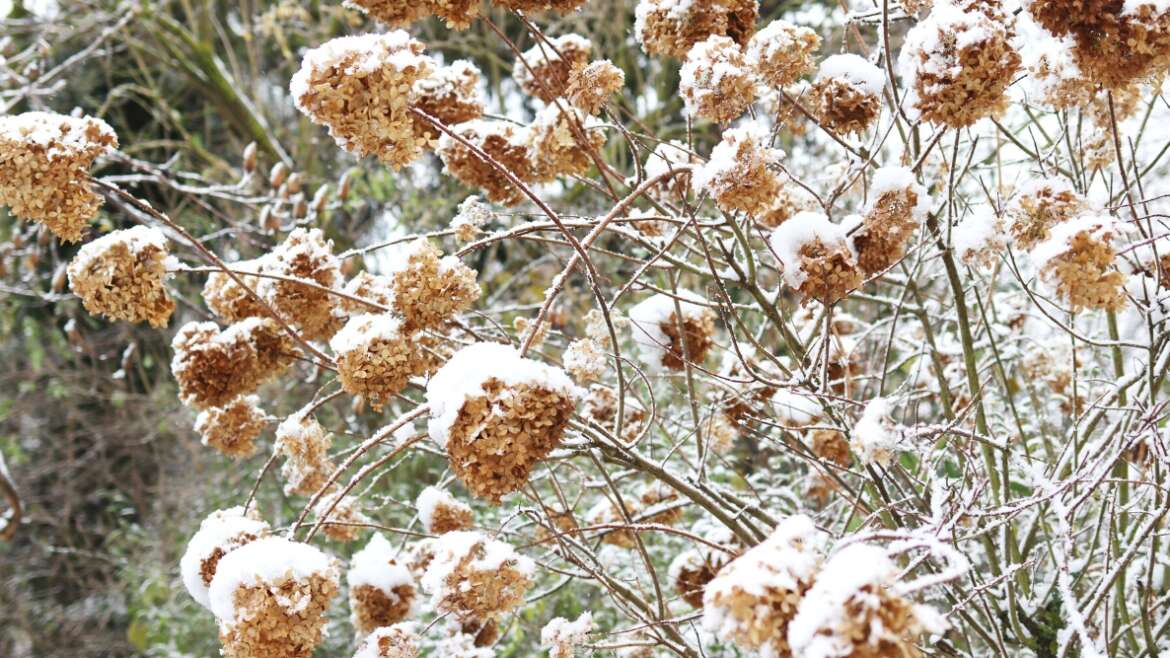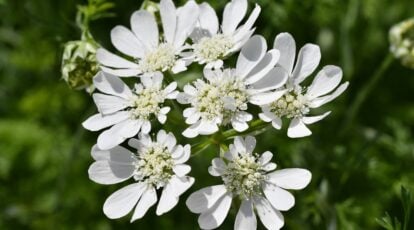If you feel like your hardiness zones no longer match your weather, you aren’t going crazy! To reference the great Woody Guthrie, “the zones they are a-changin’.” Most places are getting hotter and dryer, so it’s no surprise that warm-weather plants are now able to grow in gardens farther north than ever before.
The USDA Plant Hardiness Zone Map is an important tool for gardeners and farmers to gauge where they can grow certain plants. They tell us which plants can survive the coldest temperatures in our location. Zones determination uses an algorithm from weather data over the past few decades, namely minimum temperatures.
But as the planet changes, the zones do too. About half of the United States has shifted into a new half-zone (for example, 7a to 7b or 9b to 10a). Climatic patterns are drastically shifting due to human activity, which means the areas where different plant species can grow also change over time. Understanding changes to USDA hardiness zones will help you better plan your garden by choosing the right species.
To account for these shifts, the USDA is updating its hardiness zone map for the first time since 2012. Let’s dig into everything you need to know about the 2023 USDA Plant Hardiness Zone Map.
Do USDA Growing Zones Matter?
USDA growing zones indicate a plant’s hardiness for specific areas based on climate.
The short answer is yes, USDA growing zones matter if you want a quick way to define a species’ growing range. USDA growing zones are primarily used to label a given perennial plant’s hardiness in a specific area so gardeners can quickly reference if it will survive the coldest winters in their region.
For example, if a perennial shrub is only hardy to zone 8, a gardener in zone 5 would not purchase it to plant outdoors. Growing zones are determined from the USDA Plant Hardiness Zone map. It is simply another tool to have in your garden planning toolbox.
Every plant evolved in a specific ecosystem with certain levels of rainfall, humidity, and temperature. But the weather patterns across the country today are far different from just ten years ago. The climate zones matter for growing plants and require consistent updating to reflect extreme weather shifts.
As we’ve spread plants worldwide and hybridized them for cultivation, their adaptation to different areas has expanded. However, many species cannot evolve as quickly as the climate conditions change.
Note that in all cases, this refers to the overwintering capabilities of perennial plants. The USDA Hardiness Zone Map does not address summer temperatures, and annual plants can still be grown in most of the United States, provided that you can supply the right environmental conditions for those annuals to reach maturity.
How are USDA Hardiness Zones Determined?
 USDA zones categorize areas based on 30-year average winter temperatures.
USDA zones categorize areas based on 30-year average winter temperatures.
The 2023 USDA hardiness zones use 30-year averages of the lowest winter temperatures based on data from over 13,000 weather stations. Using these average annual lows, they divide the United States into 10-degree Fahrenheit zones (zone 1-12).
Each zone includes half-zones based on 5-degree differences. For example, zone 7a has an average annual low temperature of 0 to 5°F, while zone 7b has an average annual low of 5 to 10°F.
While the zone delineations remain the same, their locations have shifted. This year, the USDA Agricultural Research Service and Oregon State University’s PRISM Climate Group collaborated to create more accurate and detailed zone delineations. The most recent map was updated in November 2023 and reveals major changes since the last update in 2012.
2023 Changes to Growing Zones
The summer of 2023 was the hottest summer on record in the northern hemisphere. Most growing zones are shifting upwards, which means you can grow warm-weather and tropical plants farther north than you could previously. However, remember that the growing zones only indicate the average coldest winter temperature and do not apply to summer growth patterns. The steadily increasing temperatures during the summer months may become a greater issue but are not reflected in the growing zone update.
The growing zones are not the only tool you should use to choose the right plants for your garden and landscape. For example, the press officer of the USDA states, “Changes to plant hardiness zones are not necessarily reflective of global climate change because of the highly variable nature of the extreme minimum temperature of the year.”
Always combine varied information sources, like your estimated first and last frost dates, your USDA growing zone, and your personal garden records of typical peak summer heat or winter cold. Here are a few notable updates for regions that have experienced the most changes:
Overall Trend
 The USDA map shows a 2.5°F warming trend, affecting growing zones across the U.S.
The USDA map shows a 2.5°F warming trend, affecting growing zones across the U.S.
The USDA plant hardiness zone map reveals a general shift of about 2.5°F warmer annual temperatures across the board. Most of us have felt the summers get hotter, and growing zone delineation now reflects updated weather information from the past decade.
You can see the ice caps melting in the far northern mountains of Montana. Similarly, Texas gardeners have never experienced the record-breaking heat waves of recent scorching summers. The wisest of our communities regularly remind us that “it wasn’t this hot here when I was growing up.”
So it is no surprise that much of the United States has shifted into a warmer growing zone. Analysts of the 2023 zone hardiness map say that about half of America has shifted one-half zone warmer. For example, southwestern New Hampshire used to be in zone 5b, but now much of Cheshire County is in zone 6a.
But not every zone has changed. The other half of the country remained in the same half-zone. For some, the subtle shifts in average annual low temperature have kept them in the same estimated growing zone.
Still, the overall trend is warmth. Northern growers may be able to plant warmer-weather perennials and enjoy a longer growing season, while southern growers may have to avoid heat-sensitive temperate perennials and take measures to protect plants from extreme heat.
Zone Changes in Cities
 With their heat-retaining structures, urban areas may have a warmer growing zone.
With their heat-retaining structures, urban areas may have a warmer growing zone.
If you live in an urban or suburban area, your growing zone may be significantly warmer than nearby rural areas. The new map uses digital GIS technology with much higher resolution than ever used before. This means zones have smaller delineations than earlier maps and more detail for urban areas.
You may have heard of the “urban heat island effect,” which describes how cities naturally retain more heat due to the dense concentration of concrete and buildings. The new map accounts for this heat concentration by assigning urban areas warmer growing zones than their surrounding countryside. In areas with more vegetation, temperatures are often at least a half zone cooler.
Zone Changes in Florida
 Northern Florida is becoming more subtropical, shifting many areas from zones 8-9 to 10.
Northern Florida is becoming more subtropical, shifting many areas from zones 8-9 to 10.
Florida has always been warm, but now northern Florida is becoming more subtropical. For example, gardeners in Jacksonville used to be in zones 8 and 9. Now, many areas have been shifted to zone 10. This means some popular Florida landscaping and garden plants may no longer be adapted to the area.
For example, the river birch, Betula nigra, used to be widely recommended for landscape and urban plantings. However, this temperate tree is now less suitable for much of this region because it gets too warm.
On the flip side, the warmth means that winter gardens are often in a frost-free climate. Gardening through the winter months is now an option through much of the prior zone 8-9 areas where it previously might have been difficult.
Zone Changes in the South
 Warmer winters in the South, shifting zones 7-8 to 9-10, affect crops like blueberries.
Warmer winters in the South, shifting zones 7-8 to 9-10, affect crops like blueberries.
Southern growers from Texas to Georgia are accustomed to scorching summers, but the warmer winters are what we have to be worried about. The new zone map has shifted many areas previously in zones 7-8 into zone 9 or even zone 10.
This is problematic for crops like blueberries that require specific “chill hour” requirements. Cold is necessary for blueberry bushes to set fruit. If you are growing a Northern highbush blueberry in your landscape, you may find it harder to harvest berries. Varieties like Southern highbush blueberries thrive with fewer chill hours and may have to replace the berry bushes in warming zones.
Zone Changes in the Northeast
 Warming trends push northeastern gardeners into warmer zones, allowing new crop possibilities but raising pest concerns.
Warming trends push northeastern gardeners into warmer zones, allowing new crop possibilities but raising pest concerns.
The warming trend continues in the northeastern part of the United States, where many states have seen the most dramatic shifts in weather. As previously frigid winters become milder, northeastern gardeners are being nudged into warmer zones.
This means some gardeners can grow crops previously unimaginable for their reason, such as sweet potatoes or long-season outdoor peppers. But the warmer winters may also mean rising pest pressure. The winters aren’t getting cold enough to knock out insect populations, allowing some pests like ticks to breed for longer periods of the year.
Zone Changes in Alaska
 The 2023 USDA map reveals a warmer Alaska with detailed microclimate considerations.
The 2023 USDA map reveals a warmer Alaska with detailed microclimate considerations.
Alaska is undoubtedly warmer, and this is blatantly obvious in the 2023 version of the map. Compared to 2012, many far northern regions have shifted by a half or complete zone. This is partially due to more data for mountainous regions where warm winter air settles and actually keeps low-elevation valleys warmer than the old map reflected.
This year’s USDA map also pays closer attention to the detailed resolution of the last frontier. The new map’s rendering in Alaska goes to a ¼ square mile detail rather than the previous 6¼ square mile detail. This means the zone map is more usable for specific microclimates and bioregions that may have previously been overlooked.
Zone Changes in Minnesota
 Minnesota, especially the south and central regions, shifted to warmer zones, except for a few colder areas.
Minnesota, especially the south and central regions, shifted to warmer zones, except for a few colder areas.
Most of the state of Minnesota increased in its zone 5a area. The southern and central parts of the state mostly warmed from zone 4b to zone 5a. However, a few areas were shifted to a colder half-zone due to more extreme winters. These shifts may impact which perennials grow well in Minnesota gardens.
Zone Changes in Illinois
 Illinois experienced a northward shift in zones, with 6a-6b progressing into 7a and 7b.
Illinois experienced a northward shift in zones, with 6a-6b progressing into 7a and 7b.
Illinois’s zone changes fit the overall trend as well. The northward progression of zones 6a-6b into 7a and 7b is prominent in this area. The boundary between zones 5b and 6a also migrated about 70 miles north from Springfield to Peoria. The St. Louis metro area has moved into 7a due to urban sprawl and development.
Chicago has expanded its portions of zone 6a. For the first time in history, Illinois has a sliver of zone 7b in the southern area, indicating long-term winter warming.
New Zone for Puerto Rico and Hawaii (Important for Houseplants)
 Hawaii, traditionally in zones 9-11, is now identified as zones 10-13 on the new map.
Hawaii, traditionally in zones 9-11, is now identified as zones 10-13 on the new map.
In 2012, zones 12 and 13 were added to the map to incorporate more detail for areas with minimum temperatures of 50° to 60°F. The 2023 map added more detail to tropical zones 12 and 13 to further define the proper plants for America’s hottest regions. While much of Hawaii was traditionally zones 9-11, the new map identifies almost all of the islands as zones 10-13.
This data can also be useful for houseplant growers, helping them know when they need to bring tropical houseplants indoors or when it is safe to keep them outside. For example, Monsteras are traditionally hardy to zones 10-12 but now may be listed as hardy to zones 11-13.
This means the plants should be protected from any temperatures colder than 40°F. If you are unsure about the meaning of a plant’s hardiness zone, check the average annual low temperature listed next to that zone on the map. This will tell you the coldest temperatures that plants can be exposed to.
Final Thoughts
Your garden may have shifted to a warmer zone, meaning certain plants may no longer suit your area. Global changes in the earth’s weather patterns mean an overall warming trend. Tropical and subtropical plants can be grown farther north, while cool-weather and temperate plants are no longer suitable for many southern zones.
Mountainous areas may have shifted zones more dramatically due to updated resolution that accounts for microclimates, such as areas where warm winter air settles over valleys. Subtropical and tropical frost-free areas now cover zones 10b-13.
Over 80 million American gardeners, landscapers, and urban planners use the hardiness zone map to make planting decisions for their region. By keeping up to date with shifts in your area’s weather patterns, you can more easily gauge which plants will survive outdoors throughout your winter.




